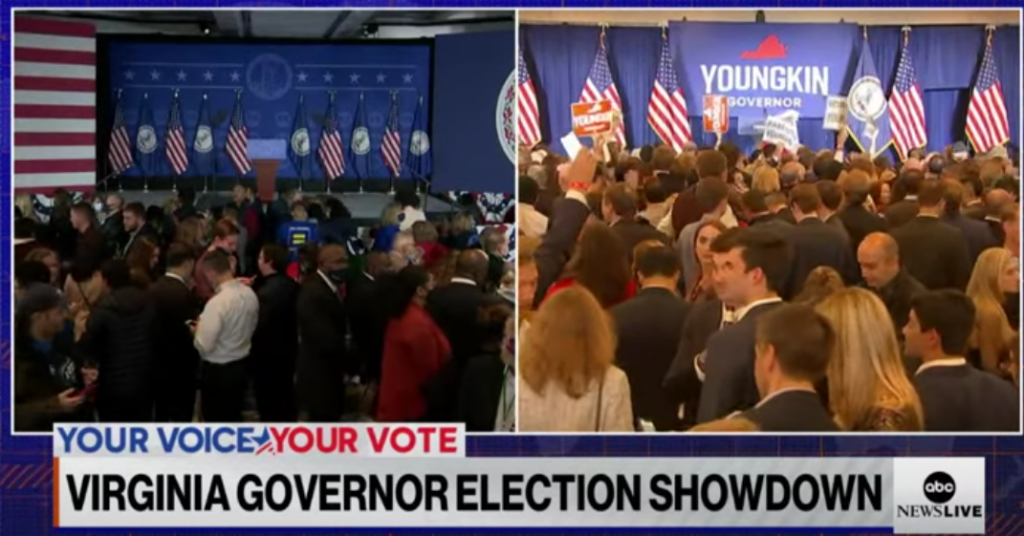Midterms 2022: The writing’s on the wall

After the Virginia Gubernatorial election ends over a decade of straight Democrat wins in the state, one question looms large. Is this a taster of what will happen at the Midterms? Very probably it is.
Democrats have a very narrow path to retain the House, and should be considered solid underdogs to hold their 50 Senate seats*. America is the posterchild for the hyperpartisan era. We focus on the swings, but the real story is the consistency. Take Presidential Election margins for example.
In the 80s Reagan won the popular vote by 10% the first time, and 18% the second. The 60s-70s saw margins go from under 3% to over 20% and back…twice! Since 2000 there has been no election where the margin of victory was even 10% different to the prior cycle. That’s the UK equivalent of under 5% swings for two decades.
Put simply, very little moves the dial of public opinion any more. One exception is a change of government, and almost always in the same way. Americans are generally dissatisfied with their government, and vote accordingly. Trump’s election presaged 4 years of Democrats outpolling Republicans by several percent nationally over and over. But Republicans made great gains almost every year during Obama’s two terms (2012 was the exception).
This effect, the so called ‘Thermostatic Model’ of public support, is now creating headwinds for Biden and the Democrats. As his approvals have fallen Democrats chances all over the country have followed. Virginia got the headlines, but the (very) narrow win in New Jersey tells the same story. The problem is national.
Being in office is an unpopular action almost all the time. That’s why almost every President sees their party suffer losses, often quite substantial ones, in their first Midterm elections. 2018 saw a Blue Wave. 2010 was described by Obama as a ‘shellacking’. Polls suggested 2002 was on course to be the same, but the exceptional (and awful) events of 9/11 led to a surge in Bush’s popularity. 1994, under Clinton, saw Republicans capture the House for the first time in 40 years.
In 2020, Democrats won all 3 chambers of government but won each narrowly. Biden’s electoral college margin flattered a race where the margin in the tipping point state was under1%. Democrats have a mere 8 seat majority in the House and a ‘Zero Seat Majority’ in the Senate (with Kamala Harris breaking ties in their favour).
With Virginia and New Jersey suggesting the party is up to 10% less popular than it was in 2020, and a shift of even 1% likely losing them both the House and Senate, the Democrats have a mountain to climb. The House is made even harder by new boundaries being drawn across the country, with many more states controlled by Republicans than Democrats at a state legislature level.
The Democrats don’t just need to improve on last week, they need a miracle to buck this extremely reliable trend. The 4/11 on Republicans taking the House and 4/6 on the Senate are both clear value.
Virginia sends a clear message: This time won’t be different. Like Wiley Coyote off the edge of a cliff, Democrats have been hoping they could defy the usual rules of gravity. Last night they looked down. Short of a stunning turnaround they’ll hit the ground hard in 12 months.
*(Technically 48 plus 2 Independents who vote with them, but essentially 50)
Pip Moss posts on Political Betting as Quincel. He has bets on Republicans winning the House at 2/5 and the Senate at 4/6. You can follow him on Twitter at @PipsFunFacts. Odds correct as of Friday 5 November.